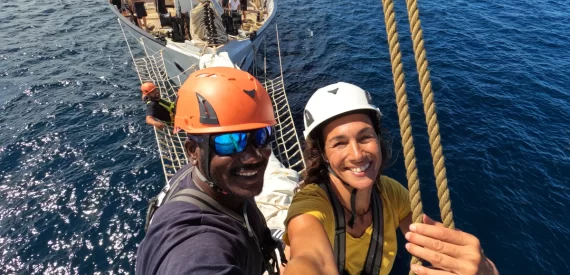Rope or sheet or halyard or . . . . .
Let’s explain why the question, How Many Ropes on a Sailing Boat, is simple in one way but complex in another.
The complexity is because there dozens or even hundreds of bits of string all over tall ships, but very few of them have “rope” in the name. There are halyards, sheets, brails, vangs, tricing lines, warps, whips and jackstays to mention but a few categories. Within each type there are lots of specific titles like jib topsail sheet, peak halyard, bunt lines and so on.
Once you know the job a rope does then the rest of the name describes where it acts. This sailing language helps define exactly what each rope does. So when someone says “the lazy staysail sheet has come off the clew” you would know where to look to find and re-attach it. (Clear as mud, but to help you can learn about ropes on a Sailing Boat in our FREE Tall Ship Guide Book.)
Don’t despair, there is no need to know them all, or any, before you go sailing. We delight in helping people learn the ropes, that’s what we do! Check out our article on ‘My First Voyage‘.
The easy bit is to list How Many Ropes on a Boat there are?
1. The Bell Rope
The most common rope is the Bell Rope that does as it suggests and smacks the clapper against the side of the bell. (Let’s get pedantic here, the bit of a bell that does the hitting is not a clanger as may be believed but a clapper, so clap your hands if this makes sense to you!)
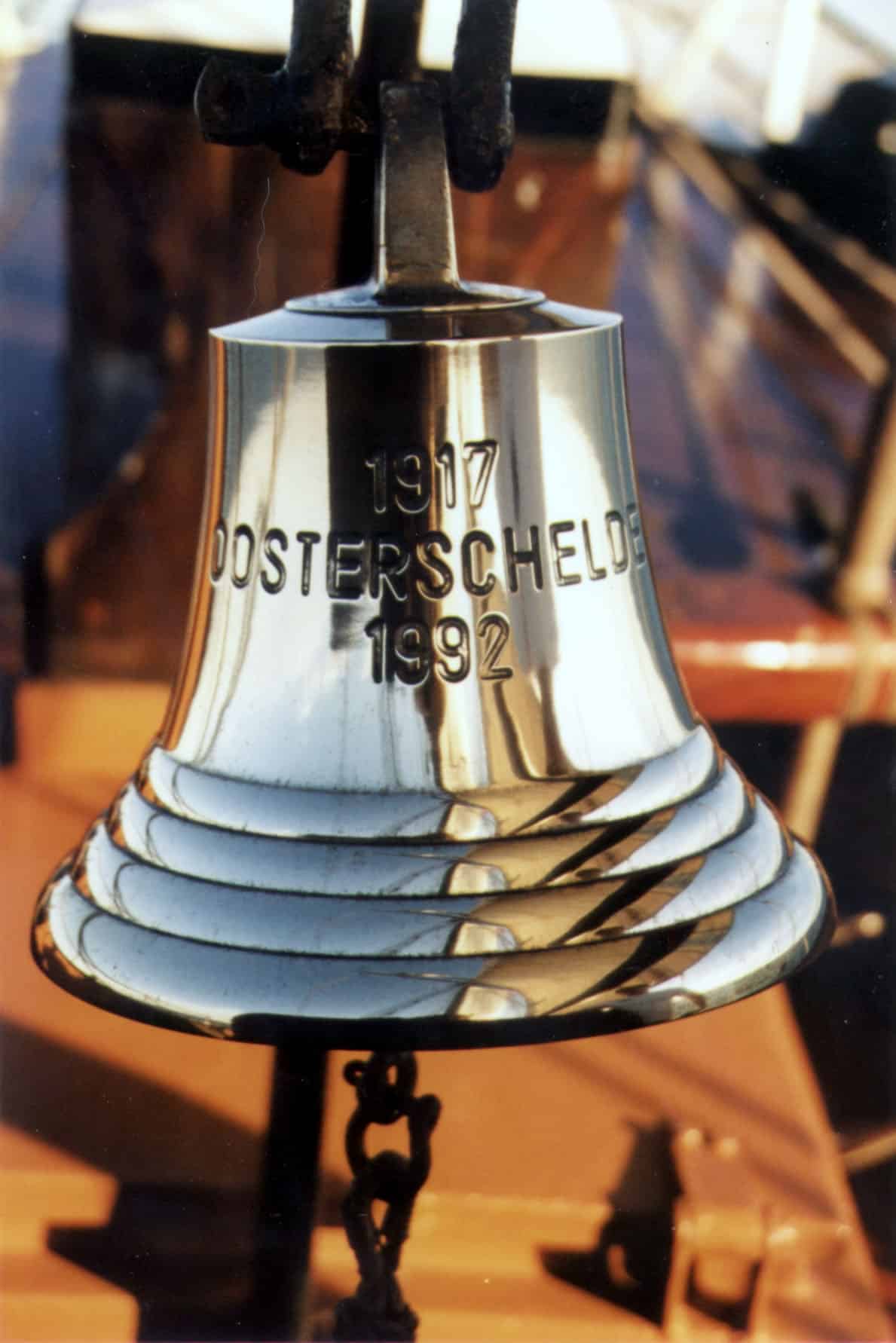
2. The Bolt Rope
The next most used is the rope that is hidden in the front of a headsail by being covered over by a fold of canvas. The purpose of this rope is create a straight front edge, luff, of the sail. This is for a sail that is not fitted onto a stay. The name relates to the fact that the canvas is folded over the rope and a fold of cloth is known as a bolt, hence Bolt Rope.
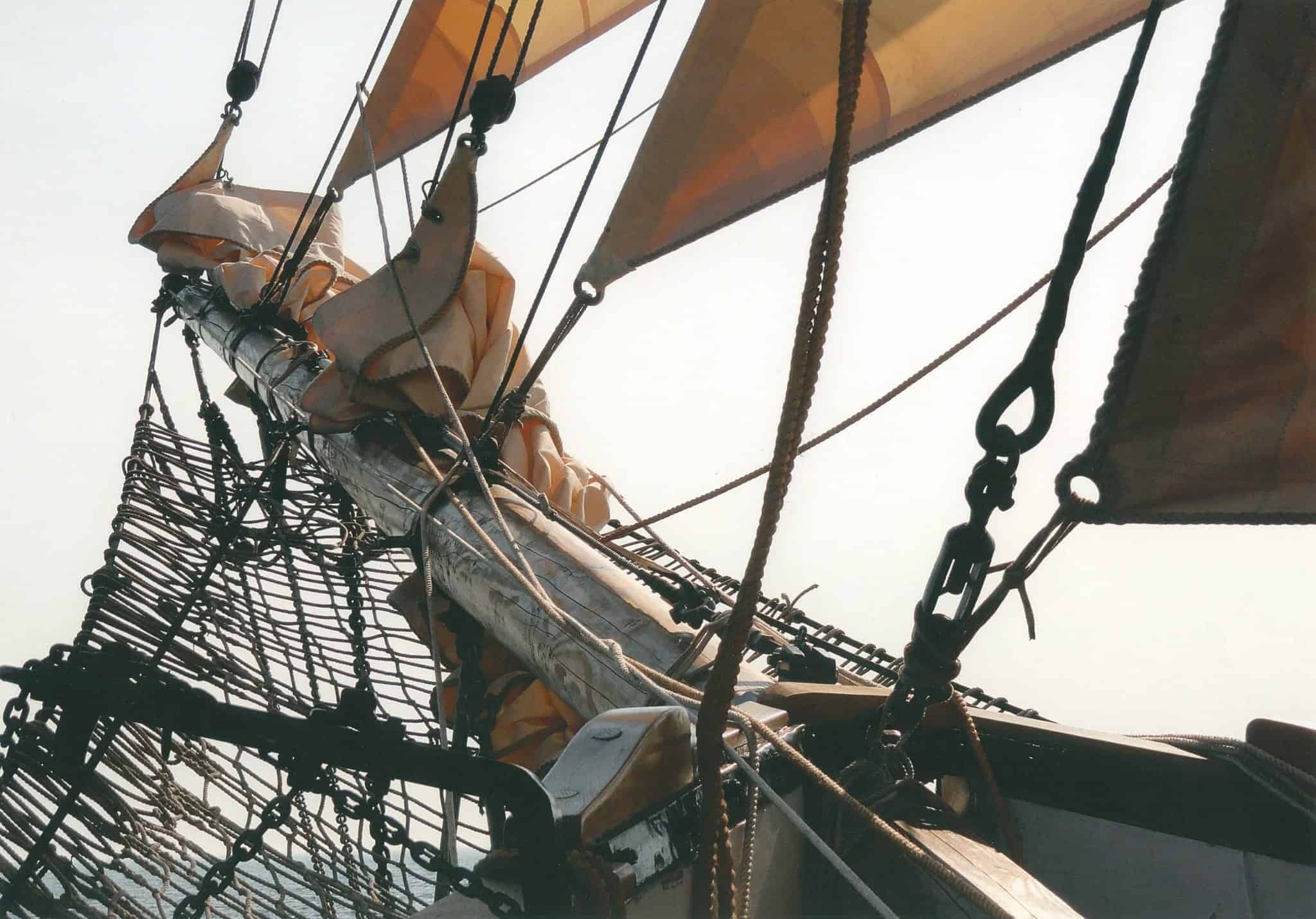
3. The Tow Rope
The tow rope, I hope you do not need this one too often and in use is as long as possible. Short tow ropes snatch and are in danger of breaking whatever they tied to. A longer rope has more stretch and is gentler on the both the towing ship and ship being towed.
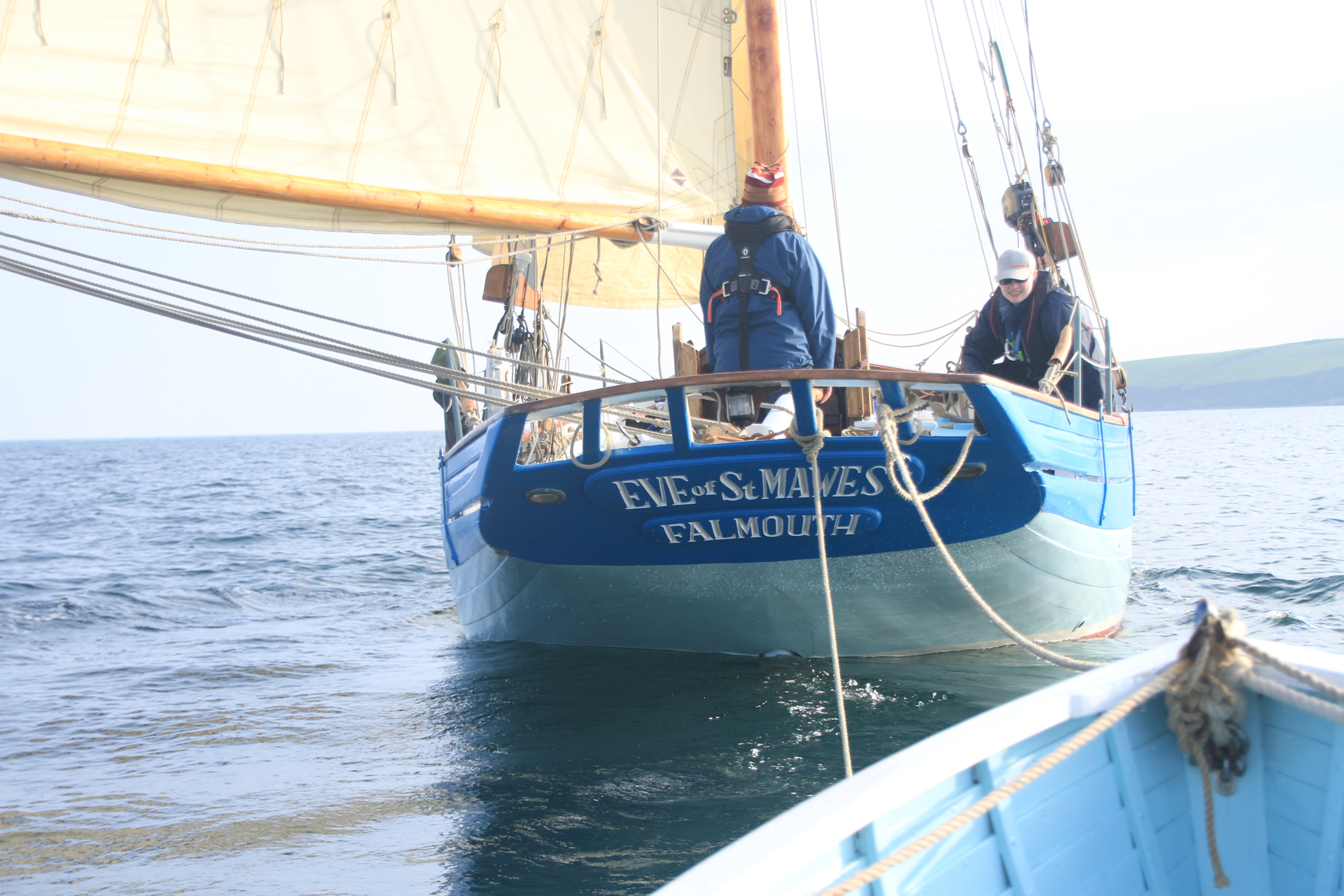
4. The Footrope
The footrope under the yard arms for your feet to stand on when you are working aloft and stowing sails is also called a footrope.
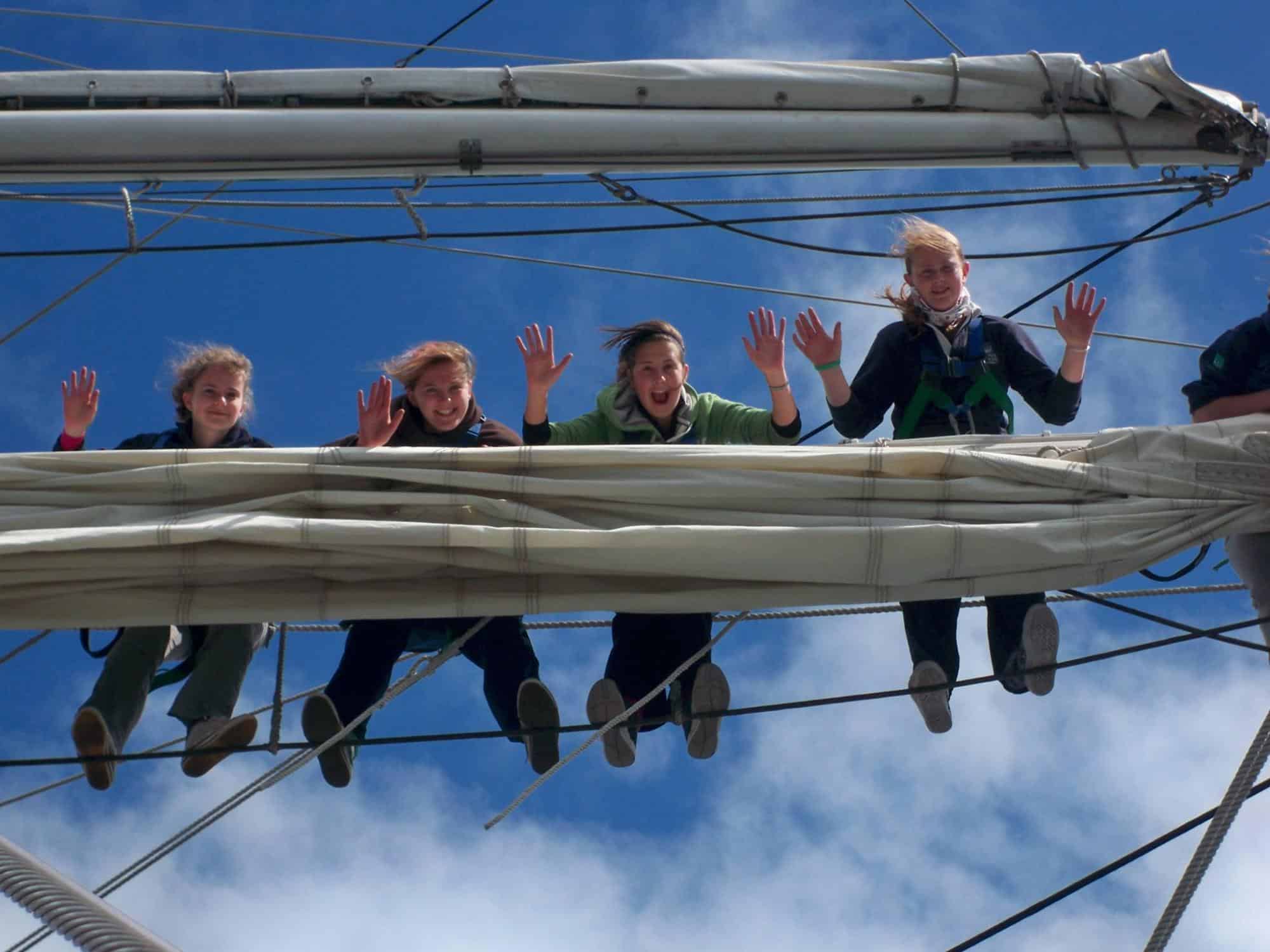
5. The Manrope
The man rope are the two ropes dropped either side of a rope ladder to assist with boarding and disembarking a vessel, especially pilots.
6. Top rope for raising the topmast, tagallant etc.
7 Heel rope for lowering the topmast, tagallant etc
Article on ‘My First Voyage’.
How Many Ropes on a Sailing Boat, 7 in total
We reckon there are seven ropes on a boat, not all boats have them and you won’t very often see them all together.
Wikipedia has a good article on rope..
Taster Voyages


